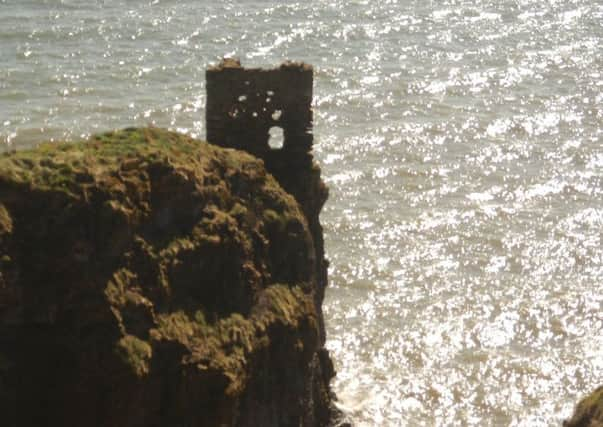Cannibal laird who boiled up his enemy sheriff in a cauldron


He is known as the Cannibal Laird who served up his own form of rough justice on a secluded Aberdeenshire hillside during the 15th Century.
David Barclay, a courtier to James II and baron of Kirktonhill and Johnston, Mearns, will forever be remembered as the man who lured a local sheriff to a quiet country spot before wrestling him to the ground and throwing him in a cauldron of boiling water.
Advertisement
Hide AdAdvertisement
Hide AdHe and his four co-conspirators, all fellow landowners of influence, then embarked on the final act of this barbarous plan - drinking the “soup” in which Sheriff Melville of Glenvbervie steeped using the five horn spoons brought for the occasion.
The place where the law enforcer met his violent end - in a gully on Garvock Hill, near St Cyrus -is still known as Sheriff’s Kettle.
According to to DP Davidson’s The Kaim of Mathers: An Historical Tale, published in 1880, Barclay acted on what he claimed was direct authority from James II.
The monarch is said to have been so fed-up with Barclay’s complaints about the sheriff’s “too rigorous exercise of his authority” that the King declared in exasperation he could not care if Melville was “sodden and suppped in broo.”
On that, Barclay and his crew of lairds returned to the Mearns and set about luring the sheriff to his death, in 1438.
DP Davidson wrote: “They soon laid a plot to carry out the King’s words as if they were a command : they planned a hunting party to meet at a place in the Forest of Garvock, (long since transferred to the shades of oblivion).
“These rude barons had ordered a caldron to be filled with water, and boiled early on the morning, the Sheriff being unsuspicious was unattended, and when the hunters came to the kettle each and all pretended great surprise, and looking in all around, these five barons tumbled the Sheriff into the boiling caldron.
“Looking in all around, these five barons tumbled the Sheriff into the boiling caldron, and each -being provided with a horn spoon, took a sup of the filthy broo ; thereby pre-tending to obey the King’s command.”
Advertisement
Hide AdAdvertisement
Hide AdIn conclusion of the matter, DP Davidson added: “Fortunately in the enlightenment of the present day such a scene as has now been recorded, would be spumed by even the most vile wretches of humanity.
Duncan Fraser, in a Portrait of a Parish, published 1970, sets out what happened next to Barclay and his friends.
Fraser wrote: “If the grisly lairds expected to be thanked by the king for a job well done, they were cruelly mistaken.”
James II refused to admit it was his idea and denounced Barclay and his mob as outlaws.
Fraser added: “He swore a specially solemn oath that their leader David Barclay, would get peace to live neither onland nor sea for the rest of his life.”
Barclay retreated to his castle, the “almost inaccessible, eerie” Kaim of Mathers, the ruin which still stands over St Cyrus Beach.
“There the cannibal laird spent the rest of his life, enjoying a more normal diet,” Fraser noted.